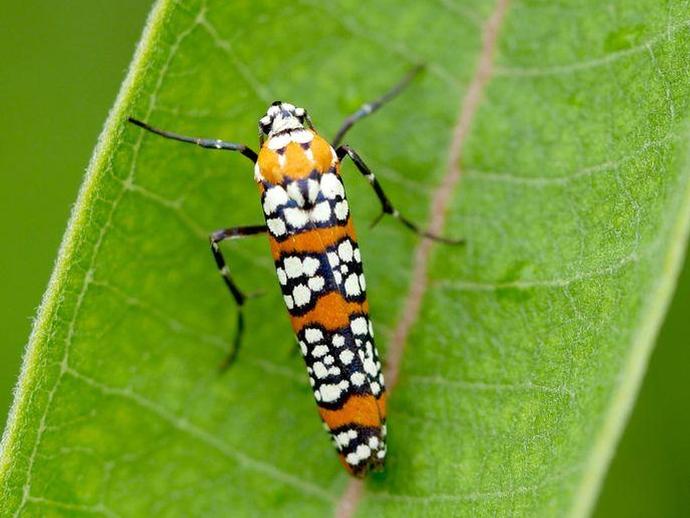October 23, 2021
We're reaching into the archives for today's #BenInNature update presented by our friends at Carter Bank & Trust! The following post was originally published on August 18, 2020.
If you've ever wanted to see a moth that looks like it borrowed a pattern from the couch your great-aunt bought in 1977, then look no further than the ailanthus webworm moth (Atteva aurea)!
These small moths are pretty common in southwest Virginia, although that wasn't always the case! It's believed that they are originally native to south Florida and Central America, which is the home of their original larval host plant: Simarouba glauca, the paradise tree. However, around the middle of the 19th century, they began gradually spreading north. Why did that happen?
Well, in the mid-18th century, another subject of a recent nature post was brought to America: Ailanthus altissima, the "tree of Heaven." These invasive trees spread rapidly, and by the mid-1800s, they had cropped up in southern Florida right in the native range of this moth. The moth caterpillars quickly adapted to feeding on tree of Heaven, which allowed it to spread throughout the same ranges as the trees. This also gave the moth its new common name, the Ailanthus webworm moth. It's since managed to spread all the way up to eastern Canada!
While we usually think of moths as nocturnal, this particular moth is diurnal (active during the day) and is a flower pollinator. They breed prolifically and have multiple generations each summer; the time between a caterpillar hatching from an egg and laying an egg as an adult moth can be as little as four weeks! They build communal web nests in Ailanthus trees, and these nests can contain multiple generations; a mix of eggs, caterpillars, and pupae. While these moths can be a pest in nurseries, they rarely do serious damage, so don't worry if you see them pop up around your home.
ABOUT #BenInNature
Social distancing can be difficult, but it presents a great opportunity to become reacquainted with nature. In this series of posts, Administrator of Science Ben Williams ventures outdoors to record a snapshot of the unique sights that can be found in the natural world. New updates are posted Monday - Friday, with previous posts highlighted on the weekends. This series of posts is made possible thanks to the support of VMNH Corporate Partner Carter Bank & Trust (www.cbtcares.com).
NATURE PHOTO IDENTIFICATIONS
If you discover something in nature that you would like help identifying, be sure to message us right here on Facebook with a picture (please include location and date of picture) and we'll have our experts help you identify it!

 Hours & Admissions
Hours & Admissions Directions
Directions

